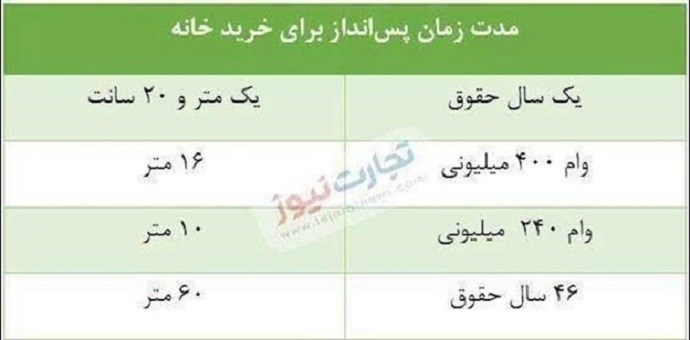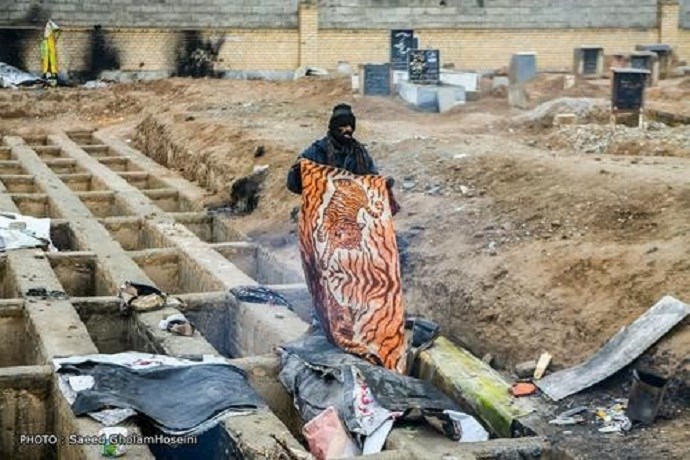Analysis by PMOI/MEK
Iran, December 3, 2020—After much debate, the Supreme Labor Council finally approved the minimum wage and bonuses of workers without their representatives being present in the April 9 meeting. Two months later, the Ministry of Labor decided to increase wages by 26 percent amid protests by large sections of workers. Eventually, married workers with one child received 27.18 million rials (about $91) per month.
One meter of housing Tehran costs 270 million rials (about $900)
The Central Bank published a report over the developments in the housing market in November of this year in Tehran. The report reads in part: “The average purchase and sale price of one square meter of residential unit traded through real estate agencies in Tehran was 271.9 million rials (about $910) which, in comparison to the previous month and previous year, shows an increase of 1.8 and 118.2 percent, respectively,” according to a November 26 report by Kasbokare online.
According to the above two news, we can guess the availability of housing to workers and other impoverished sectors of society. This, of course, does not take into account the millions of unemployed workers, and only includes those who earn a wage and have to spend all of this money just to make ends meet. And one of the needs most worker-class families are dealing with is the costs of medication and treatment during the covid-19 crisis.
One-meter house per year; Workers’ purchasing power
“If a worker saves all his salary for the year and does nothing but breathe, he can buy one meter of housing. Where are the impoverished people in government’s decisions?” said Ardeshir Motahhari, a member of the regime’s Majlis (parliament) on September 1, according to the Mashregh news agency.
At that time, according to the Central Bank, the average price per square meter of residence was 230 million rials (about $767).
A month later, the price of the housing increased again and reached an average of 242 million rials (about $807) per meter. This is a 91-percent year-over-year growth of the price of housing. Now with this significant price increase, how many years should people wait to buy a house?

This infographic, published by Tejarat News, shows that a worker can buy 1.2 square meters with one year’s worth of salary and will have to save his entire salary for 46 years to buy a 60-meter home
Here’s a simple calculation: The minimum monthly salary of workers is about 27 million rials (about $90) and one year of wages is 324 million rials (about $1,080), assuming a worker saves his entire annual salary, he can only buy 1.2 square meter from a house!Therefore, assuming that housing prices and minimum wages remain the same, a worker must fully save 46 years of his salary in order to buy a 60-square-meter house at a price of about 14.52 billion rials (about $48,400).
Home; An irreplaceable need
Now let’s take a look at these difficult days for providing basic goods and food. Some food items can be replaced with low-quality alternatives at cheaper prices. Some families have removed meat from their diet and are consuming vegetables instead for lack of purchase power. Some are forgoing new clothing and are wearing their threadbare clothes. But providing a shelter for the family is not something to be ignored unless you expect the people to start living in tents and caves.
But in Iran, even housing has become a luxury commodity. There are many reports of “grave living”, “roof renting,” and “sleeping in shops,” especially among workers.
“The rent for sleeping on the roof for every night has increased by 250,000 rials (about $1) from previous year and has reached 500,000 rials (about $1.7),” said Ali Nozarpour, Mayor of Tehran’s District 22.

In Iran, the poor sleep on roofs

Grave living in Iran
Why build a house on top of a mountain?
For a long time, from the administrations of Mahmoud Ahmadinejad to Hassan Rouhani, the government has presented useless plans to provide house but has in effect made construction facilities unusable. The houses built under these government-led plans have become the sources of many problems.
An example is the Maskan-e Mehr housing project, which has turned out to be a total waste of national capital.
“Land should be allocated where there are basic living facilities. Why should we build a house on the top of a mountain or sell land where there is no road, water, gas or electricity that will take years to settle? If we are looking to build social housing and we want people to become homeowners, we must reform the infrastructure of housing construction and provide free land and cheap loans so that people can afford housing,” said a member of the Labor Council in Alborz Province, according to the ILNA news agency on November 28.
“It costs money to build a house, and low-wage workers are unable to build a house,” he added. “No worker can buy a house with a 28-million-rial salary (about $94), even in the city slums, let alone build a house. More than half of the workers’ wages and earnings is spent on rent, and in many cases, they cannot make ends meet,” he added.
Dealers take over the share of housing bank facility
Now let’s see what regime has done with the billions of dollars it has amassed in state-owned banks, and the huge amounts it has obtained from the people’s savings.
Reports over the type of activities carried out by the regime’s banks show a complete deviation from the conventional and legal duties of banks.
Regarding the issue of housing, banks could provide the cost of housing construction in the form of appropriate facilities, while we see that these facilities have changed direction in the service of dealers and transactions outside the banks.
“The share of housing sector in bank lending facilities has decreased from 17 percent in 2011 to 7 percent in 2019, and only 3 percent of it is allocated to housing construction. While ignoring this share, banks have spent most of their facilities on providing short-term loans to the unproductive sector of the economy,” according to a November 27 report by Fars News Agency, an outlet linked to the Revolutionary Guards (IRGC).
Short-term loans
Due to the change in the nature of economic activities in this regime and the move towards increasing unproductive activities, the banking system in Iran tends to pay short-term facilities and mortgages that are not suitable for banks because of its long-term repayment cycle. These facilities are mainly used in unproductive but profitable sectors such as importing luxury goods and buying and selling land, etc.
“In the current situation, major banking facilities are dedicated to quick-return activities and trading and have created the conditions for rising inflation,” economist Hossein Raghfar told Ayar online on November 28.
“We now have 2.5 million luxury homes nationwide while many are homeless and cannot afford these houses. The price of 1.5 billion rials (about $5,000) per square meter to buy a house in Tehran is not reasonable,” said Ali Nikzad, Deputy Speaker of the regime’s parliament, according to the Jahan News website, November 26.
Let’s go back to the list of essential priorities that an average family should provide.
Parents should think about providing food or buying an educational tablet so that their child do not commit suicide. Should they seek medicine and Covid-19 treatment or do anything to find a job… They must have a shelter for each of these and dozens of other vital items… but…





